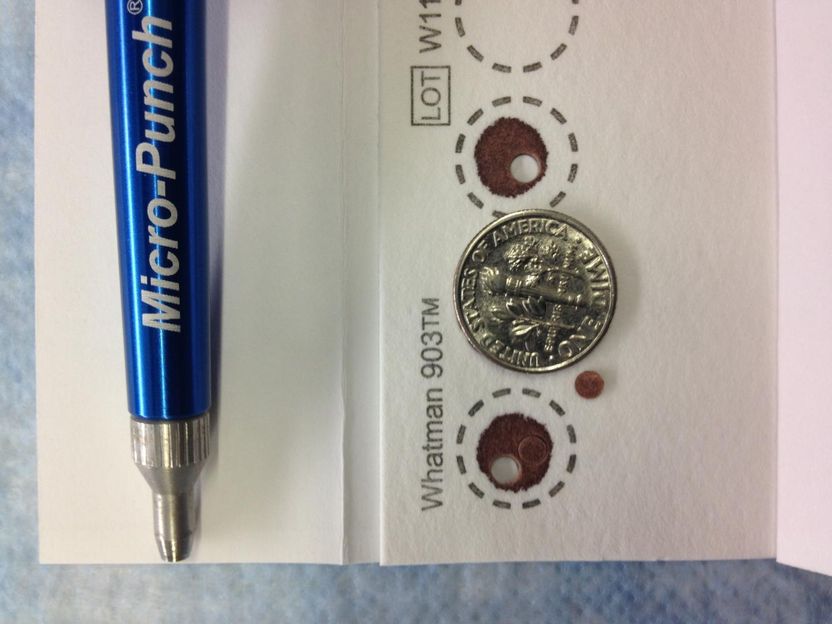New blood spot test used internationally in fight against HIV
Researchers at the Skaggs School of Pharmacy and Pharmaceutical Sciences at CU Anschutz have developed a technique that estimates an HIV-negative patient's adherence to drugs prescribed to prevent HIV transmission during sex.

A 3mm punch is taken from a dried blood spot and sent to the lab to assess PrEP drug levels.
CU Anschutz Medical Campus
The test measures traces of antiretroviral drugs in a spot of dried blood to determine how much pre-exposure prophylactic, or PrEP, medicine a patient has used. Truvada, the only FDA-approved antiretroviral PrEP drug for HIV prevention, is proven more than 90 percent effective in stopping HIV transmission during sex - in those who use it consistently. The assay technique provides an objective way to tell if patients are using PrEP consistently.
"There's a need to objectively measure PrEP adherence because traditional ways have not been very effective," said Pete Anderson, Pharm.D. and professor of pharmaceutical sciences at the CU Skaggs School of Pharmacy. "This assay takes advantage of the long half-life of PrEP medication in red blood cells. This means the drug builds up in these cells only if the patient takes it consistently."
The method is to spot a sample of a patient's blood on an absorbent paper-like card and send it to a lab which isolates and measures concentrations of PrEP drugs found in dried red blood cells. These drugs' presence are measured to estimate how many doses a patient has taken over the last month or two. Clinicians then have an objective measurement that shows if a patient is using PrEP effectively. Studies show that people using the PreP method are most successful when medication is used consistently.
The lab manager at the CU Skaggs School of Pharmacy who developed the assay, Lane Bushman, said, "Most cell sample collections require significant effort for processing, but the dried blood spot is an easy sample collection technique. This helps with implementing the test in most settings."
Anderson said, "This assay has been in high demand for PrEP studies. We recently helped a South African lab to develop the method to help with testing demand in that region."
The assay is now being used in research internationally and the approach could have application for other drugs that require accurate measurement of patient adherence to dosing.
"We now have a grant to develop a way to do the testing at bedside," Anderson said. "We also see applications for other medications. For example, our colleague Dr. Jennifer Kiser is evaluating if a similar test could work for Hepatitis-C medications."
Most read news
Organizations

Get the analytics and lab tech industry in your inbox
By submitting this form you agree that LUMITOS AG will send you the newsletter(s) selected above by email. Your data will not be passed on to third parties. Your data will be stored and processed in accordance with our data protection regulations. LUMITOS may contact you by email for the purpose of advertising or market and opinion surveys. You can revoke your consent at any time without giving reasons to LUMITOS AG, Ernst-Augustin-Str. 2, 12489 Berlin, Germany or by e-mail at revoke@lumitos.com with effect for the future. In addition, each email contains a link to unsubscribe from the corresponding newsletter.






















































